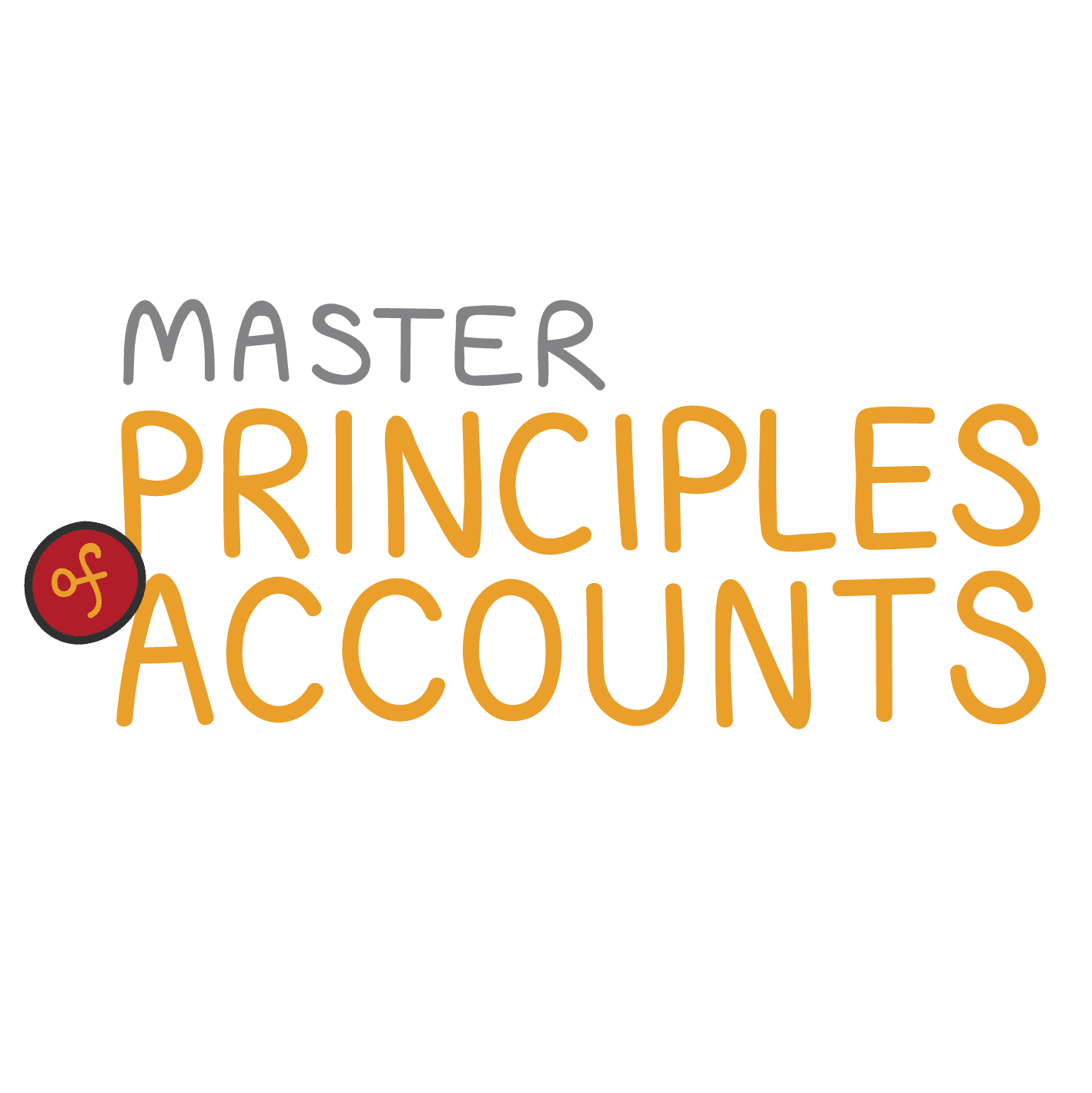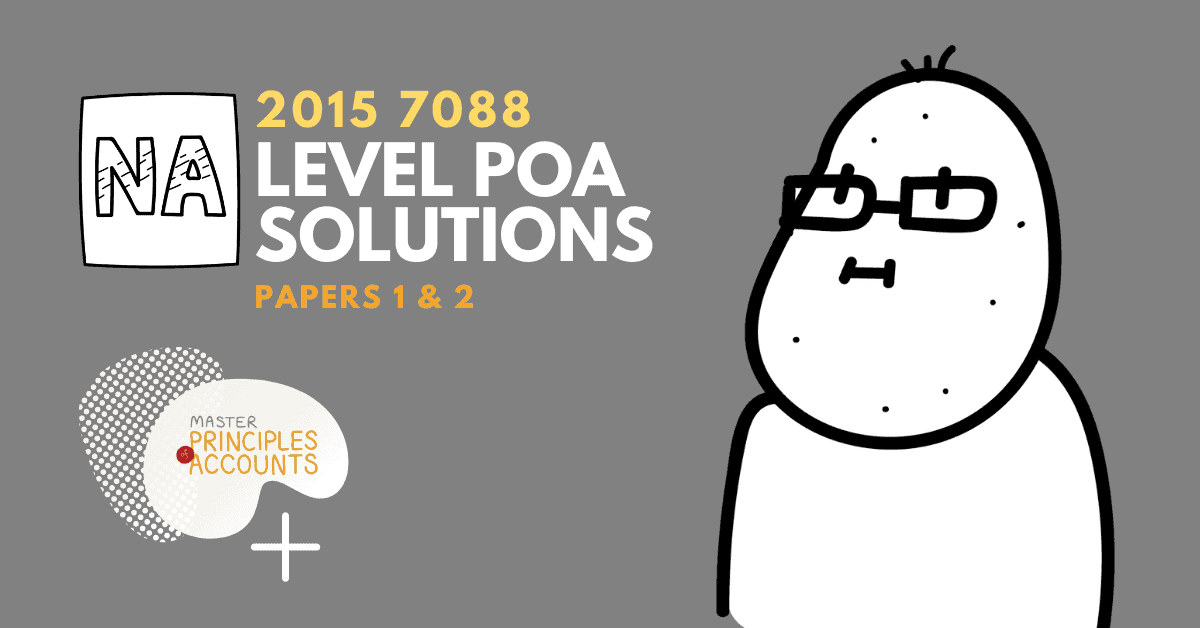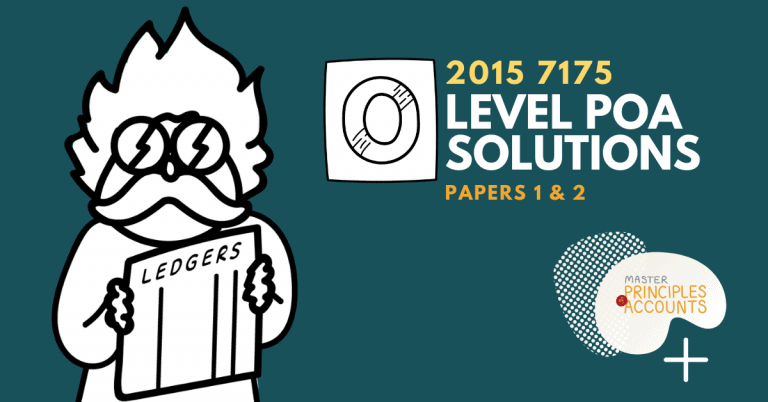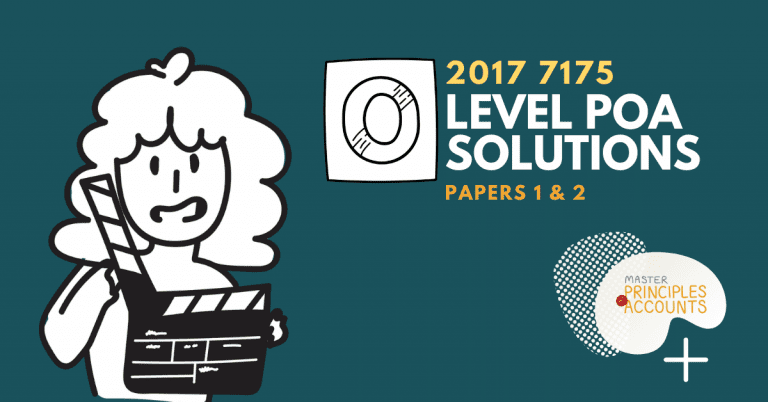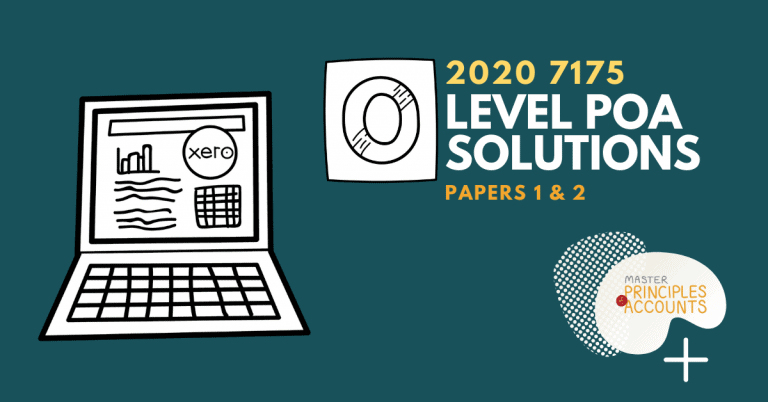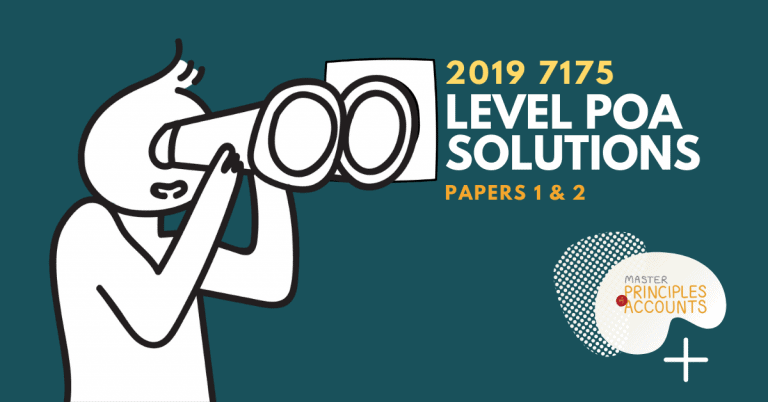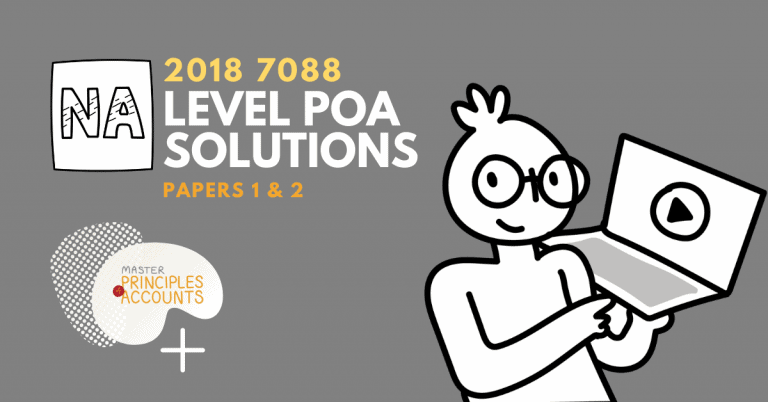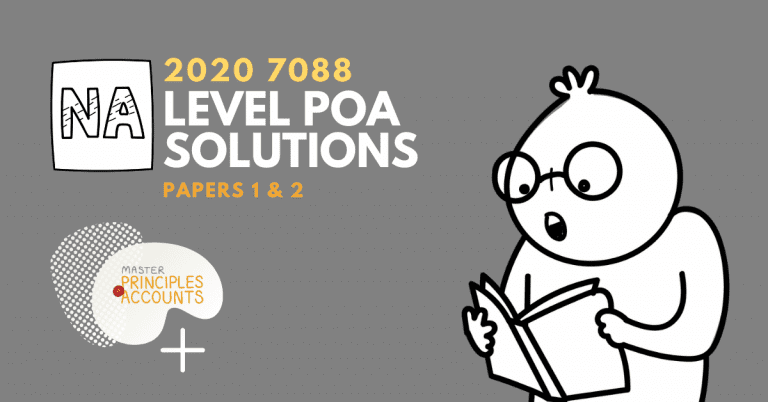2015 N Level POA Answers
Paper 1 :
a) Assets equals to liabilities less owner’s equity.
b) Arun’s capital at 1 March 2015 = 3,000 + 100 + 600 – 1,000 – 150 = $2,550
c)
General journal
| Date | Particulars | Dr | Cr | |
| $ | $ | |||
| 1 | Apr 1 | Office equipment | 80 | |
| Other payables | 80 | |||
| Being purchase of office equipment on credit | ||||
| 2 | Apr 1 | Cash in hand | 500 | |
| Capital | 500 | |||
| Being capital contribution of cash from owner |
d) The accounting (business) entity states that the business and its owner(s) are treated as separate and different entities. Only transactions which affect the business are recorded in the business books.
a)
Rent income account
| Date | Particulars | Dr | Cr | Bal |
| 2014 | $ | $ | $ | |
| Jan 1 | Cash at bank | 1200 | 1200 Cr | |
| Jul 1 | Cash at bank | 1200 | 2400 Cr | |
| Dec 31 | (transfer to*) Income summary | 2400 |
b)
| Income | Expenses | |
| Cost of sales | ✔️ | |
| Depreciation | ✔️ | |
| Wages | ✔️ | |
| Discount received | ✔️ |
c) Matching theory states that expenses incurred must be matched against income earned in the same accounting period to find the accurate profit for the year.
di) Purchase journal
dii) Purchase returns/Return outwards journal
diii) Cash book
ai) Current assets: cash and other assets are to be paid to creditors within one year from the date of the balance sheet.
aii) Current liabilities: amounts to be paid to creditors within one year from the date of the balance sheet.
aiii) Working capital: working capital is the amount of capital (or the excess of current assets over current assets over current liabilities) that is available to meet the day-to-day expenses of running the business such as payment for purchase of goods, payment to trade creditors and payment of wages to employees, etc.
bi)
| $ | Current assets | Current liabilities | |
| Cash in hand | 150 | 150 | |
| Inventory | 42000 | 42000 | |
| Trade payables | 40000 | 40000 | |
| Bank overdraft | 5500 | 5500 | |
| Trade receivables | 44500 | 44500 | |
| Total | 86650 | 45500 |
bii) Working Capital = 86,650 – 45,500
= $41,150
c) The purchase of a motor vehicle by cheque will reduce the amount in the Cash at bank account, which is a current asset and therefore result in a drop of working capital.
Paper 2 :
Mei
Statement of financial performance for the year ended 30 June 2015
| $ | $ | |
| Fees income (75000 – 3200) | 72400 | |
| Less: Other Expenses | ||
| Rental expenses (3680 – 490) | 3190 | |
| General expenses | 27140 | |
| Loan interest expense | 400 | |
| Insurance expense | 750 | |
| Wages and salaries expense (19500 + 590) | 20090 | |
| Impairment loss on trade receivables | 275 | |
| Depreciation of fixtures and fitting (10% x 30500) | 3050 | 53895 |
| Profit for the period | 17505 |
Mei
Statement of financial position as at 30 June 2015
| Assets | $ | $ | $ |
| Non-current asset | cost | Acc. dep. | N.B.V |
| Fixtures and fittings | 30500 | 9150 | 21350 |
| Current assets | |||
| Cash at bank | 7520 | ||
| Trade receivables | 9525 | ||
| Prepaid rent expense | 490 | ||
| Cash in Hand | 200 | ||
| 17735 | |||
| Total assets | 39085 | ||
| Equity and liabilities | |||
| Owner’s Equity | |||
| Capital (13030 + 17505 – 7000) | 23535 | ||
| Non-current liabilities | |||
| Long term borrowings | 8000 | ||
| Current liabilities | |||
| Wages and salaries payable | 590 | ||
| Other payables | 3760 | ||
| Fees received in advance | 3200 | ||
| 7550 | |||
| Total equity and liabilities | 39085 |
a) Receipt, Bank Statement, Petty Cash Voucher, Payment Voucher (any two)
b) Any two from:
• To pay for small items of expenditure
• to reduce the number of entries in the Cash Book, thus prevent overcrowding
• the job of recording small payments can be assigned to a junior clerk
c)
| $ | |
| Petty cash balance 1 Sept | 100 |
| Total payments in Sept | 64 |
| Bank reimbursement on 30 Sept | 64 |
| Petty cash balance 1 Oct | 36 |
d) The payment should be classified as Drawings in the general journal.
e) Cash discount = 2% * $2,000 = $40
f)
General journal
| Particulars | Dr | Cr |
| $ | $ | |
| Trade payable – Anna | 2000 | |
| Discount received | 40 | |
| Cash at bank | 1960 |
a) Straight line method is suitable for depreciating non-current assets which benefits the
business at a uniform rate. The benefits from using the motor vehicle is higher in its initial years
when it operates more efficiently. Hence it is more appropriate to charge more for depreciation
in the first few years and less in subsequent years.
b) i) profit for the year will be overstated
ii) non-current asset will be overstated
c)
Accumulated depreciation
| Date | Particulars | Dr | Cr | Bal |
| 2013 | $ | $ | $ | |
| Aug 31 | Depreciation (20% x 20000) | 4000 | 4000 Cr | |
| Jul 1 | Balance b/d | 4000 Cr | ||
| 2014 | ||||
| Dec 31 | Depreciation (20% x (20000-4000)) | 3200 | 7200 Cr | |
| Jul 1 | Balance B/d | 7200 Cr |
d) Matching Concept. A portion of the cost of the non-current asset is matched against the
income earned from using the non-current asset in the same period to find the accurate profits
Prudence concept states profits and assets should not be overstated. Depreciation is charged
to Income Statement to avoid overstating profits, while accumulated depreciation is recorded in
the balance sheet to avoid overstating the value of non-current assets.
e) Materiality
(Explanation: whether an expenditure item is recorded in the balance sheet as capital
expenditure or as an expense in the income statement depends if it is significant and
materially impacts business decision making. Lamps and waste paper bins are
insignificant)
a)
- Error of Commission
- Complete reversal of entries / Error of completed reversal
- Error of original entry
- Error of principle
b)
General journal
| Date | Particulars | Dr | Cr | |
| $ | $ | |||
| 1 | 31 Jul | Utilities / Electricity expenses | 500 | |
| Telephone expenses | 500 | |||
| 2 | Cash at bank | 6500 | ||
| Sales revenue | 6500 | |||
| 3 | Cash at bank | 360 | ||
| Machinery repairs | 360 | |||
| 4 | Motor vehicle repairs | 250 | ||
| Motor vehicle | 250 |
a)
Inventory
| Date | Particulars | Dr | Cr | Bal |
| 2015 | $ | $ | $ | |
| Jun 1 | Balance b/d | 700 Dr | ||
| 12 | Cost of sales | 175 | 525 Dr | |
| 15 | Trade payable – Joe | 320 | 845 Dr | |
| 18 | Trade payable – Joe (purchases returns) | 240 | 605 Dr | |
| 19 | Drawings | 105 | 500 Dr | |
| 22 | Cost of sales | 70 | 570 Dr | |
| 26 | Trade payable – Kate | 180 | 750 Dr | |
| Jul 1 | Balance b/d | 750 Dr |
b) Cost of sales = $175 – 70
= $105
